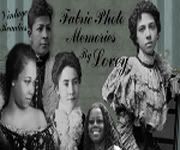Well, we all know I love that sparkle, shimmer, glimmer and gleam that
Christmas brings with it - hopefully in a shower of glitter and lots of
magic and enchantment.
But even the most ardent fan of Christmas glamour can weary of it just about this time of the year ... a few weeks after Thanksgiving and the novelty has worn off and the splendid joys of the season haven't quite hit home yet.So, today, I'm feeling the need of something a little different ... no more Christmas trees, ornaments, holiday decorations or DIY's ... I'm feeling the pull and lull of the languid, luxurious and sensuous curves and elaborations that are that inspired decorative style ... art nouveau.
The Art Nouveau style (or Jugendstil
in German) was an artistic style popular between 1890 and 1910. Inspired
by natural forms, the two-dimensional perspective of Japanese block
prints, and undulating curves, (or "whiplashes," as they were called
after a critic's 1894 description of these lines as "sudden violent
curves generated by the crack of a whip"), Art Nouveau spread throughout
Europe until it was superseded by the clean lines of modernism and Art Deco in the 1920s.
Art Nouveau can be considered a "total" style, meaning that it found a
place in visual art, architecture, and the decorative arts, and its
consumers and creators sought to blur the boundaries between the fine
arts and applied arts. Despite the characteristic reliance on organic,
dynamic lines, Art Nouveau adherents did not eschew modern materials or
industrial processes like their brethren in the Arts and Crafts Movement
(1860-1910).
Instead, they relied on glass, wrought iron, and technological
innovation to create pieces that seemed to blend with the natural
elements of daily life. In Art Nouveau, industry facilitated the visual
harmony with nature that its practitioners so ardently sought.
There were a few main themes across Art Nouveau to keep in mind. In an
era of industrialized production, many designers looked to a local, pre-industrial past
for a foundation; in Russia that was folk tales and folk history, and
in France it was the 18th-century 'golden age' of French design. Working
in cities like Paris, Nancy and Brussels, Art Nouveau designers found
greatest inspiration in nature — not necessarily nature's beauty, but instead its vital force, its never-changing life cycle of birth, life, decay and death. Nature sometimes took the role of a creepy other-world, governed by dark uncontrollable forces.
Exquisite art nouveau pendant in gold, silver, platinum and ivory with enamel details
This idea of an uncontrollable world all around us was mirrored in the Art Nouveau interest in psychology, symbolism and the supernatural.
Sigmund Freud was writing about the unconscious dream world, and
artists were trying to explore that world through art and design.
Symbols weren't fixed — their meaning shifted and was ambiguous.
Also ambiguous was the role of women in Art Nouveau. As always, women were important muses for artists and designers, and at this time there was a lot of interest in famous performers like Sarah Bernhardt, the dancer Loie Fuller, the nightclub performer Jane Avril. But in an era when women were increasingly independent — struggling for suffrage, gaining the right to divorce, more visible in the public sphere than previous generations — the Art Nouveau woman had a menacing twist. She was alluringly sexual, but also scandalous, morally compromised, even mortally threatening.
Luxe sterling and enamel Russian art nouveau caviar server
Nature was a big inspiration for Art Nouveau, but not necessarily the
'pretty' side of nature — more its vital organic force that could be
almost terrifying.
The demi-monde of Parisian nightclubs was an important source and inspiration for Art Nouveau.
The demi-monde of Parisian nightclubs was an important source and inspiration for Art Nouveau.

Sometimes I torture myself by doing a search for Art Nouveau furnishings
on 1stDibs. I covet the impossibly beautiful lamps, mirrors, plates and
furniture — all impossibly priced.
Glass was an important Art Nouveau medium, with designers like Emile
Gallé in France and Louis Comfort Tiffany in the US experimenting with
both ancient and brand new techniques. Glass was effective for conveying
the important Art Nouveau theme of metamorphosis, with surfaces treated
as three dimensional layers, and varying from opaque to translucent.
Dragonflies were a common motif during this era, as were bats and other
creepy creatures of nature that could be seen as menacing or
otherworldly.With its sinewy lines, flower and plant motifs, and ethereal curves, Art Nouveau decor is almost fantastical in its beauty.
This Parisienne restaurant, an art nouveau wonder, was simply boarder over when the style became obsolete, only to be discovered in the 1950's, completely intact and perfect. It has been refurnished and is now a popular café catering to the well-to-do and tourist trades.
Thank you for taking this little stroll through art nouveau land with me ... I hope you enjoyed the delightful - almost faerie tale wonder - of the art movement that created such exquisite design in everything from architecture to jewelry to art. I hope you're inspired ...... now go make something beautiful!
¸.•´¸.•*´¨) ¸.•*´¨)(¸.•´
(¸.•´♥ Tristan ♥

































































































11 comments:
Very interesting. Thanks for sharing.
Very interesting. Thanks for sharing.
loved this post! thank you!
Beautiful stuff!
Definitely your style, tasteful and exquisite
Don't know where you find all the wonderful pictures - but so glad you do, thank you.
Oh to have a house with a spiral stairwell made of marble! Merry Christmas Tristan! Love, Sanna.
How unexpected and beautiful! Wishing you the happiest of holidays and the best new year!
This post is beyond wonderful, Tristan. Thank you!
Wishing you a very Merry Christmas and a Happy Creative New Year!
I Love Art Nouveau Style... it's always such Eye Candy to behold, like Wonderful pieces of Art! Blessings from the Arizona Desert... Dawn... The Bohemian
Such a great post Tristan, hadn't read it before now- thank you for sharing this information. I have always loved Nouveau style-now I understand why!
Jackie
Post a Comment